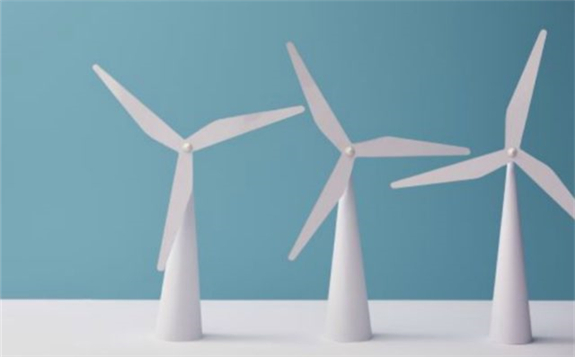According to the latest market outlook published by GWEC Market Intelligence, 71.3GW of wind power capacity is expected to be installed in 2020 despite the impacts of COVID-19, which is only a 6% reduction from pre-COVID forecasts.

According to the Global Wind Energy Council (GWEC), this is a significant increase from original predictions that expected wind power installations to be reduced by up to 20% due to the COVID-19 pandemic, demonstrating the resilience of the wind power industry across the globe.
From 2020 to 2024, the cumulative global wind energy market will grow at a compound annual rate of 8.5% and installing 348GW of new capacity, bringing total global wind power capacity to nearly 1,000GW by the end of 2024, which is an increase of 54% for total wind power installations compared to 2019.
While some project completion dates have been pushed into 2021 due to the pandemic, next year is expected to be a record year for the wind industry with 78GW of new wind capacity forecasted to be installed in 2021. Over 50% of the onshore wind power capacity added between 2020 to 2024 will be installed in China and the US, led by installation rushes to meet subsidy deadlines.
The offshore wind sector has been largely shielded from the impacts of the COVID-19 crisis, GWEC Market Intelligence has increased its forecast for offshore wind by 5% to 6.5GW of new installations in 2020, another record year for the industry, led by the installation rush in China. Up until 2024, over 48GW of new offshore wind capacity is expected to be installed, with another 157GW forecasted to be installed from 2025 to 2030.
Wind power has continued to grow and thrive
Ben Backwell, CEO of GWEC said: “While the COVID-19 crisis has impacted every industry across the world, wind power has continued to grow and thrive. This is no surprise given the cost competitiveness of wind energy and the need to rapidly reproduce carbon emissions. Fossil fuel industries face market fluctuations and require bailouts to stay afloat, while wind turbines across the world have continued to spin and provide affordable, clean energy to citizens everywhere.”
“Thanks to the localised nature of wind power supply chains and project construction, the sector has continued to generate billions in local investment and thousands of jobs to support economic recovery. However, in order to tap into the full potential of wind power to drive a green recovery, governments must ensure that energy markets and policies allow a continued ramp-up in investment in wind and other renewables, while disincentivising investment in expensive and declining fossil fuel industries,” he added.
China and the US will continue to be the two main markets driving growth over the next few years, according to Feng Zhao, Strategy Director at GWEC.
“We have increased or maintained our forecasts for onshore wind in regions such as Latin America, North America, Africa, and the Middle East over the next five years, with only minor decreases in Asia Pacific and Europe. However, these reductions are not necessarily a direct impact of COVID-19, but also a symptom of pre-existing regulatory issues, such as protracted permitting procedures, which are slowing down installations. In particular, offshore wind has demonstrated its resilience by exceeding our pre-pandemic forecasts for 2020, and will be an important source of growth in the decade ahead,” says Zhao.
He adds: “We have seen a series of carbon neutrality commitments by major economies such as China, Japan and South Korea over the past few weeks. Since wind power is a key technology for decarbonisation, these targets will increase the forecast for wind power over the next few decades.”
However, the right enabling regulatory and policy frameworks must be in place to accelerate renewable energy growth to meet these targets, urges Zhao.
“China, the world’s largest wind power market and largest carbon emitter, has pledged to go carbon-neutral by 2060. To have a chance at achieving this target, we need to be installing 50GW of wind power per year in China from now until 2025, and then 60GW from 2026 onwards. It is crucial that governments firm up carbon neutrality targets with tangible actions to drive wind and other renewable energy growth at the levels needed to achieve these aims,” concludes Zhao.